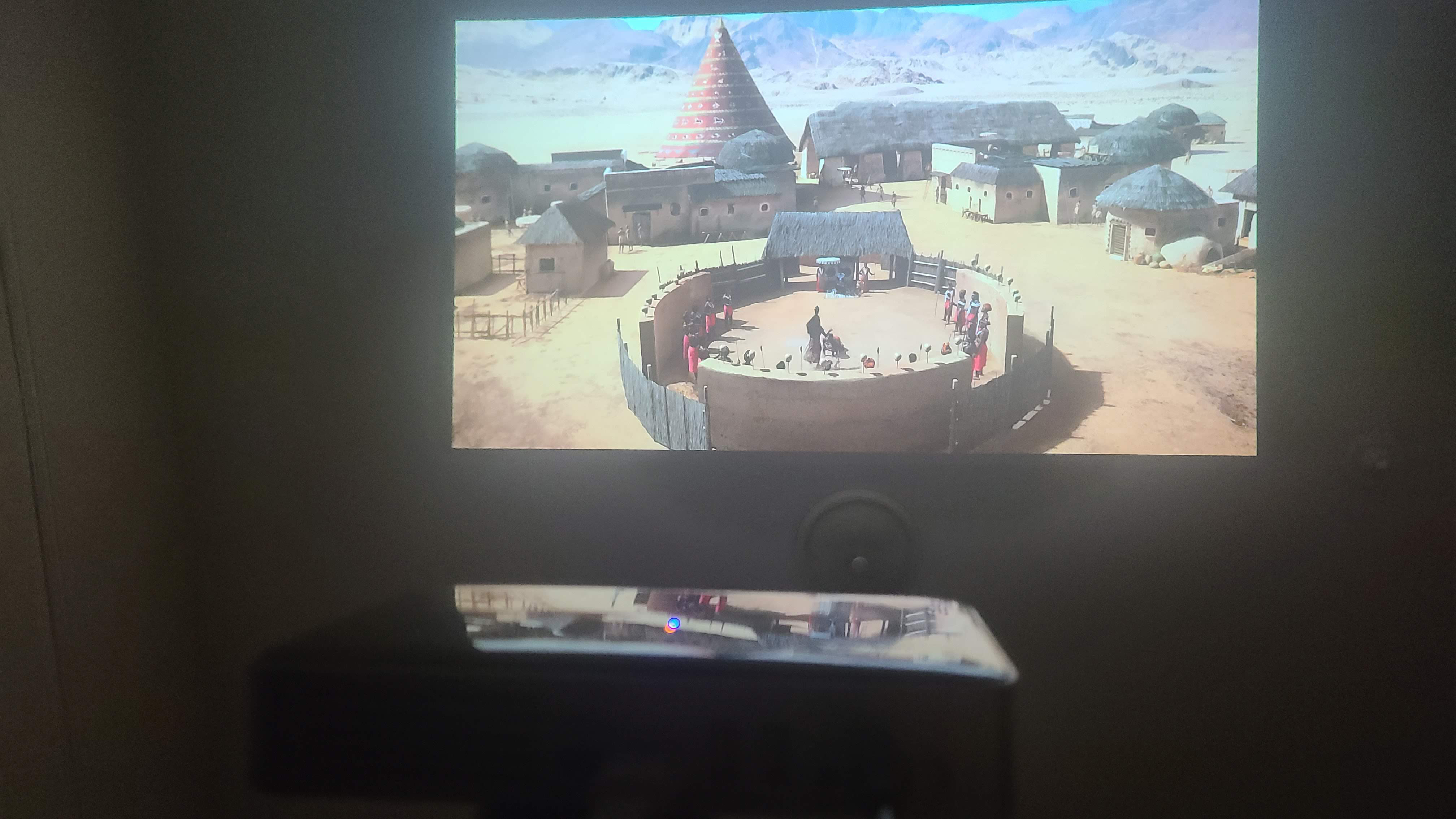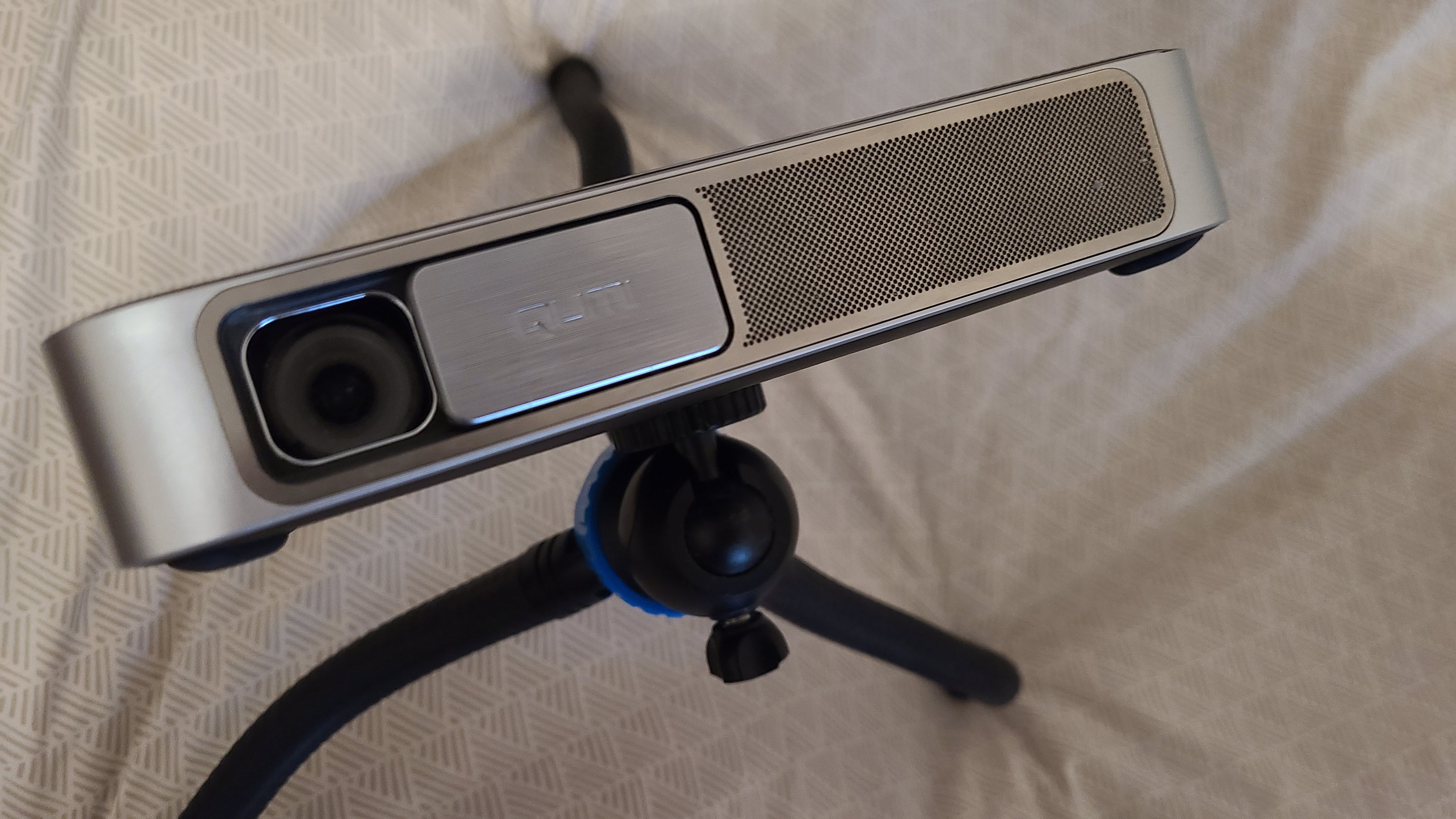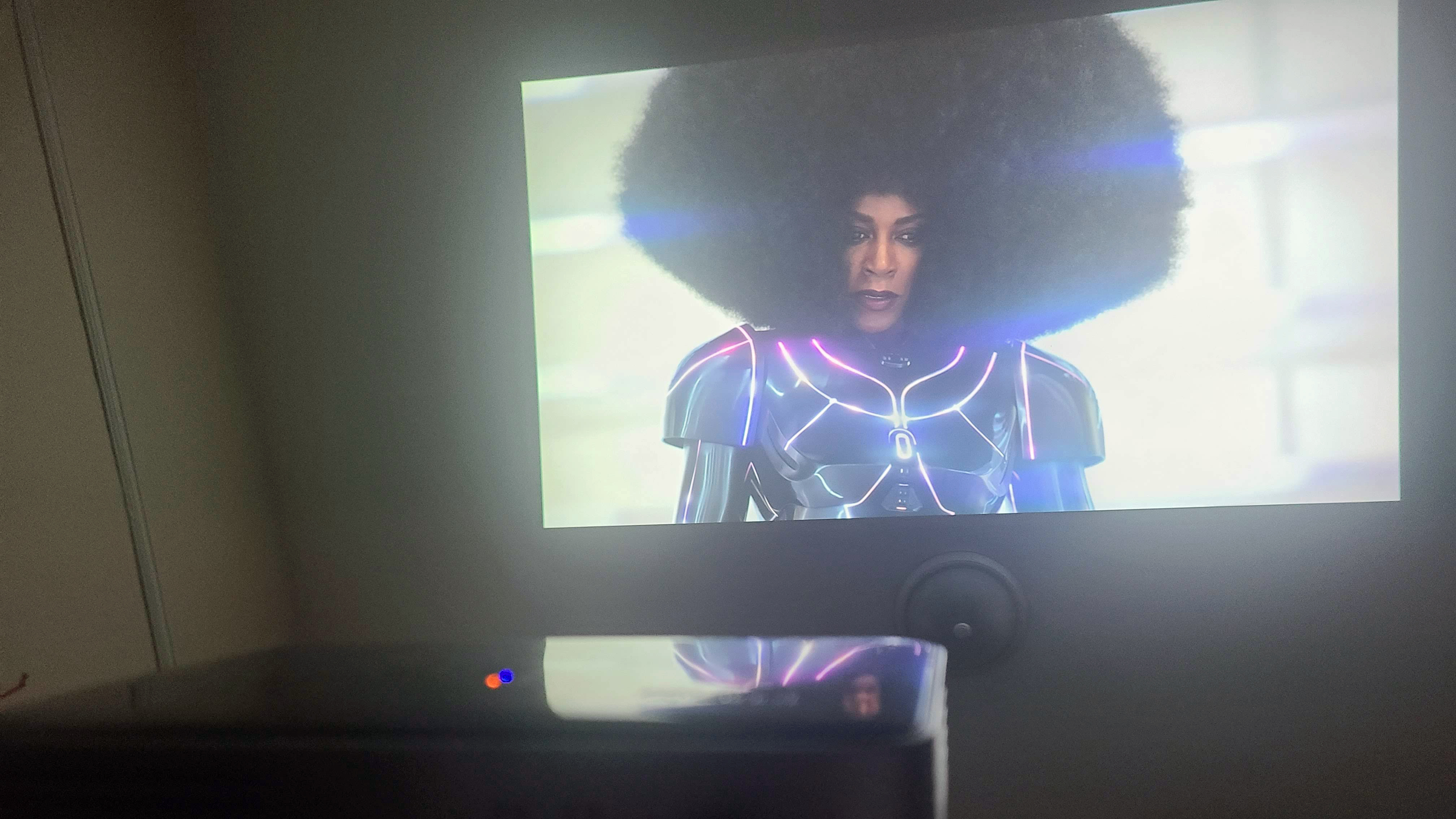After a long day, who doesn't love setting up their projector and settling onto the couch and getting cozy to watch a few episodes of ...
After a long day, who doesn't love setting up their projector and settling onto the couch and getting cozy to watch a few episodes of their favorite Netflix show or a Disney Plus movie? I don’t. The couch is fine and all, but there’s a setup that’s so much better.
When it comes to comfortably enjoying content on a big screen, lying in bed while shining a projector at the ceiling is truly sublime. From the comfortable repose to the massive image, projecting onto the ceiling is a true luxury, and yet it’s easily accessible and simple to set up.
I’ll admit that it’s not perfect, but there’s so much to love that it should be easy to ignore all the drawbacks for all but the most hardened cinephiles. Here's why.
- Check out our guide to the best projectors – or, failing that, the best TVs
Lean back, all the way back
Settling into bed with all the covers and pillows is on another level of relaxation compared to the couch – unless you own a couch that’s more comfortable than your bed, in which case, why aren’t you sleeping on the couch?
You get to let your shoulders hang, arms droop, legs sprawl out, and don’t even have to hold up your head. If you’ve been sitting at a desk all day for work, all the better to change up your posture.
Getting to lie back in bed and gaze up at the ceiling while watching TV or movies is a nearly unbeatable relaxation. The only active part of you will be your eyes, and only barely. It’s also a great setup for getting in some gentle spinal twists or hip stretches if you’re not one to sit still during a movie.
Though you can also set up a small TV or second screen for your bedroom, you’ll still have to sit up in bed or crane your neck to see it straight. Not to mention, a projector can give you a much, much bigger image than a TV without taking up a huge section of your room, which brings us to the setup.

A small footprint for a big screen
Unlike projecting to a wall or relying on a TV, projecting onto the ceiling requires fairly little in the way of a setup. You don’t need a TV stand or an empty section of wall. As long as your ceiling is painted a muted color close to white and isn’t stucco or popcorn, you’re pretty much good to go. The wide open swathe of ceiling is unlikely to have obstacles like paintings or furniture in the way.
Assuming you’ve got that clear ceiling space, you can go right ahead and put a projector onto a tripod and point it up. It doesn’t even have to be a big one – just big enough to hold the projector steady. In fact, the smaller the tripod and the lower it is to the ground, the bigger your picture will be. And, since you can more or less just point the projector straight up, there shouldn’t be too much keystone adjustment involved. (Obviously, this will be hard to recreate with an ultra short-throw projector.)
With your projector set up low to the ground, it’s very simple to just tuck it underneath your bed when you’re done watching, allowing the setup to take up that much less room. The wiring for audio output and video sources can also all travel under the bed for a tidier setup.
Setting up a projector to shine at the wall can be a lot more involved. You’ll have to find somewhere to point it at the wall without any obstruction and, you’ll need to get it at the right height and angle or deal with keystone correction and lens shifting. Once you find that perfect spot, you then have to make sure you can get everything from audio to input sources wired up there.

The perks of the picture
You’ll want to make sure you’ve got a fairly sharp picture, because it’s actually easier to get a massive image than it is to get a smaller one. Since the throw distance from the floor to the ceiling will often be considerable, you’ll likely need to find somewhere high up for the projector if you want anything smaller than a 55-inch picture.
For example, I’ve got a roughly 10-foot ceiling and my projector sits just a few inches off the ground, and the result is a picture stretching over 100 inches. It’s like having a great seat in the movie theater.
Shining onto the ceiling in the bedroom also has some extra perks for your image over using a living room and wall. For one, you’re more likely to have a good way of shutting out external light sources in your bedroom.
That’ll make the image from the projector that much punchier. And, external lights like daylight coming in through a window are more likely to hit your walls than your ceilings – of course, there are always exceptions.

Pros and cons
As great as this setup is, it’s not ideal for everything. Serious cinephiles would likely scoff at relying on a ceiling as a projection surface. The likely inconsistencies in its surface and paint won’t make it an ideal surface – hardly a silver screen. Of course, nothing needs to stop you from attaching a projection screen to your ceiling if you insist on faultless picture quality.
Unless you’re really comfortable with your friends, your ceiling projection may not be something you get to share with a wide audience either. Most of us probably wouldn’t invite a dozen friends over to watch a movie only to bring them into our bedroom and point to the ‘seating’, so don’t throw out your living room TV just yet.
All that said, there’s nothing wrong with projecting onto the ceiling in other rooms, if you’ve got rich carpeting to lie on – or that legendary bed-beating couch.
Lastly, ceiling projection is kind of bad for one of the joys most frequently paired with viewing experiences: snacks. Lying flat on your back may be great for relaxing, but it’s not so well suited for eating and drinking. I guess you can’t have it all.
- Check out the best projectors, for the ceiling or otherwise
from TechRadar - All the latest technology news https://ift.tt/3aCqi79
via IFTTT








COMMENTS